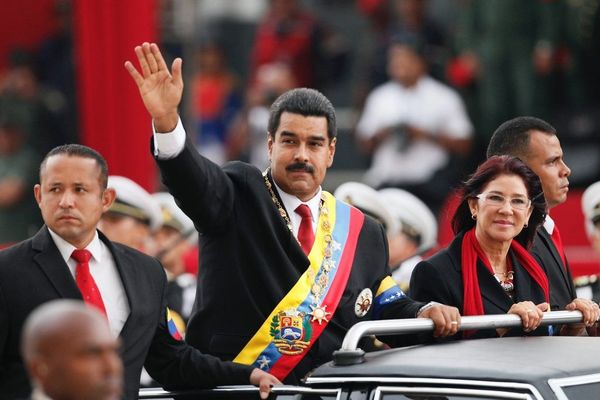It’s scary out there…
Despairing about the state of the world is a popular pastime for amateurs and professionals alike. It’s easier to imagine the apocalypse than to visualize progress, and apocalypses certainly make for more compelling movie plots. But our fears are fickle, prone to change with the latest headlines. Ten years ago, for example, everyone’s favorite apocalypse-in-waiting was the suitcase nuclear device in Times Square. If you search Google Trends for the term “suitcase nuclear device”, you’ll discover that its search popularity peaked in July 2005 and has been in steady decline since then, except for a recent uptick probably reflecting concerns about the malevolent potential of ISIS. Today people are scared by other things. I just searched Google Trends for “US Russia War” for example. Not too many people were worried before 2013, but since then it’s been climbing the charts.
The approach of Hallow’s Eve has got me thinking about what I find really scary about the world today. And it’s not just the events themselves or its antagonists and protagonists that spook me but also the way we think about them—and world affairs in general. Here’s my fright list.
The scariest phrase I read in the press today is “moderate rebels.” One of the most common plot devices in horror movies is the mutant, the laboratory creature invented by the mad scientist or the grasshopper turned gigantic by a dose of radiation. I put “moderate rebels” in that category. Perhaps they can be created in the laboratory, but they do not appear naturally in the world.
And there’s a simple reason for that. When societies become discombobulated, when order breaks down and civil unrest ensues, the center, by definition, is the first thing to collapse. We might even say that the loss of popular confidence in the middle path is a necessary precondition for civil disorder. And yet it doesn’t work both ways. When outside actors try to rebuild the society, it proves all but impossible to start in the middle. Violence and disorder tend to empower the extremes. Trying to build up “moderate rebels” is like building a house without a frame or expecting the center of a custard to set before its edges. Physics just doesn’t allow it.
Another scary artifact I come across from time to time are haunted models. Nope, not haunted motels but haunted models. As commentators try to make sense of this fluid world we live in, they inevitably fall back on old models for thinking about international relations. I would argue that most of these models are long past their sell-by dates, but they continue to haunt us, seducing with their apparent explanatory powers even as their fidelity to reality declines. Just a couple of weeks ago, the venerable Economist ran a story on the New Game in Great Power Politics with a graphic showing Russian President Putin, Chinese President Xi, and President Obama sitting around a poker table. The tag line was “American dominance is being challenged.” The poker/great game model for understanding world affairs has been around for a couple of centuries and I think it’s about ready for its exorcism.
Now the reader may wonder what harm is caused by reliance on haunted models. Well for one thing, I doubt the Chinese view their emergence on the world stage in terms of a poker game. I’m not a China expert, so I can’t speak to the Chinese conceptual framework for international relations or even know if their leaders think in those terms. But we make a classic error when we apply one of our cultural models to a country such as China. Perhaps more important is that haunted models, such as the great game metaphor, can’t account for the dynamics of today’s world. They tend to diminish or ignore contemporary issues, such as international cooperation on climate change or economic trade.
Speaking of contemporary issues, there’s an emerging phenomenon in today’s world that is increasingly scary to legacy institutions—what we could call “The Attack of the Restless Citizenry.” It seems like wherever you look, you see populations—particularly electorates—going off script, taking matters into their own hands, and engaging in what the conventional pundits perceive as unconventional and frightening behavior. In the UK, Labor Party supporters elected Jeremy Corbyn as their leader, a pacifist backbencher whose lifelong calls for unilateral nuclear disarmament led at least one senior officer of the British military to use the mutiny word. In Guatemala, a citizenry exhausted by endemic corruption just elected a television-comedian-turned-politician as President. And in the most compelling example, the campaign in the U.S. for the Republican presidential nomination is currently led by two non-politicians whose lack of government experience is their most attractive quality.
What these citizens seem to be questioning is the competence and relevance of legacy institutions. And it’s not just a phase. Edelman, the world’s largest independently owned public relations firm, conducts an annual worldwide Trust Barometer. Its results for 2015 show that “the number of countries with trusted institutions has fallen to an all-time low among the informed public. Among the general population, the trust deficit is even more pronounced, with nearly two-thirds of countries falling into the distruster category.” And this is not just about government institutions. Trust in business is below 50 percent in more than half of the countries surveyed.
It’s definitely worrying that many societies may be entering a period of political and social volatility. But it’s even more frightening to contemplate that legacy institutions may not know how to respond. We humans sense that our world is changing profoundly; institutions—be they government, business, or nongovernmental—have often been too quick to dismiss the importance of these changes. They behave not unlike those characters in horror movies who don’t pick up on the obvious clues. (They are the first to die.) Like in a good horror movie, the warning signs are all there for legacy institutions to see. Ignoring them is not the right answer.







